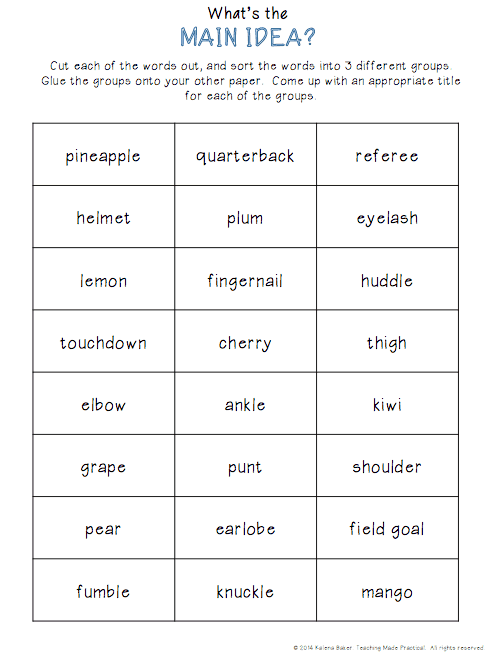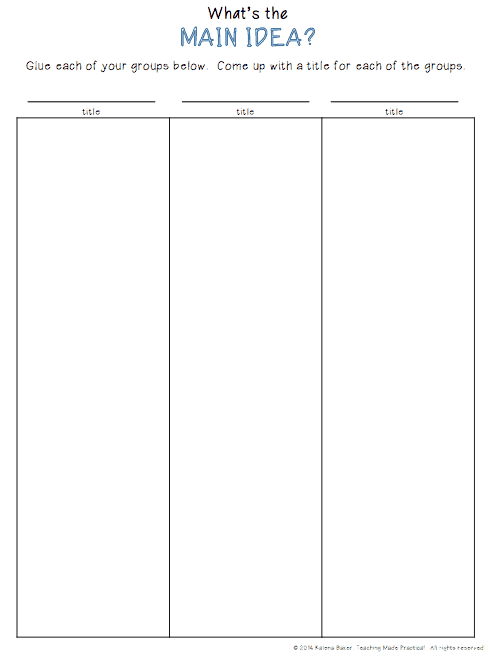1 scoop, 2 scoop.... What's the main idea?
Topic, Main Idea, and Details: Ice Cream

The problem with most main idea resources is that they don’t teach students HOW To find the main idea; instead, the resources simply provide students with practice of a skill that they don’t really understand. And then students practice finding main idea in the wrong way and form misconceptions that can be very difficult to correct.
Over the years, we've experimented with a variety of different ways to teach main idea and supporting details to our students. Below are the different strategies that we found most successful and that helped develop a TRUE understanding of main idea in my students.
Teaching Main Idea: Start with the Title
Teaching kiddos how to use a title to help them figure out the main idea of a reading passage is one of the easiest and most overlooked strategies. In nonfiction especially, the title will usually tell you exactly what the topic of the passage will be, which is the first step to figuring out the main idea.
Let’s say your class is reading Sheila Keenan’s Animals in the House: A History of Pets and People. Just based on this title, students should be able to make reasonable predictions as to the main idea and supporting details of the text. You could ask some different questions to help encourage that thinking:
Just by thinking carefully about the title, students should be able to predict a reasonable main idea to the book, as well as possible supporting details. In nonfiction books or passages, kiddos can also use headings to make similar predictions of the main idea and details of smaller sections.
You could also cover up the title of a book or passage, and have students make predictions about what the title is after reading. This will get the kids thinking about what was most important and what the text was mostly about.
Teaching Main Idea: Group Words
This is a simple yet powerful activity that can help students distinguish between the topic and supporting details. Simply provide the kiddos with a list of words from several categories, have students organize those words into groups, and then have them come up with an appropriate title for each group.
The important part of this activity is getting the kiddos to think about how certain words relate to each other (the details), and what word or title would be appropriate to describe all of the details (the topic/main idea).
This activity takes a lot more prep but is a valuable way to assess kiddos' understanding of main idea and supporting details while getting them to think more critically.
Before the lesson, we write a paragraph that has a very clear main idea. Then, add a sentence to the paragraph that is somewhat on topic, but doesn’t really support the main idea of the paragraph. The kiddos are then able to cross out the sentence that doesn't " belong "
Teaching Main Idea: Scaffolded Graphic Organizers
We've seen a huge variety of cute main idea graphic organizers in our search for main idea resources – umbrellas, flowers, hamburgers, hands, tables, ice cream cones, clouds, popcorn – you name it, it’s been done. The one we steer towards is the ice cream cone. YUM .



Our students were excited that we were going to be doing a craftivity, even though they had no clue what it was. We first began our own example by introducing the activity. Each ice cream cone had a word on it. That was the main idea. Each ice cream scoop had a word that was a supporting detail to the cone. We then asked what was it that each ice cream cone was talking about.
The more students do these types of activities, the more capable they will be of coming up with the main idea and supporting details themselves. Go grab a book!





Comments
Post a Comment